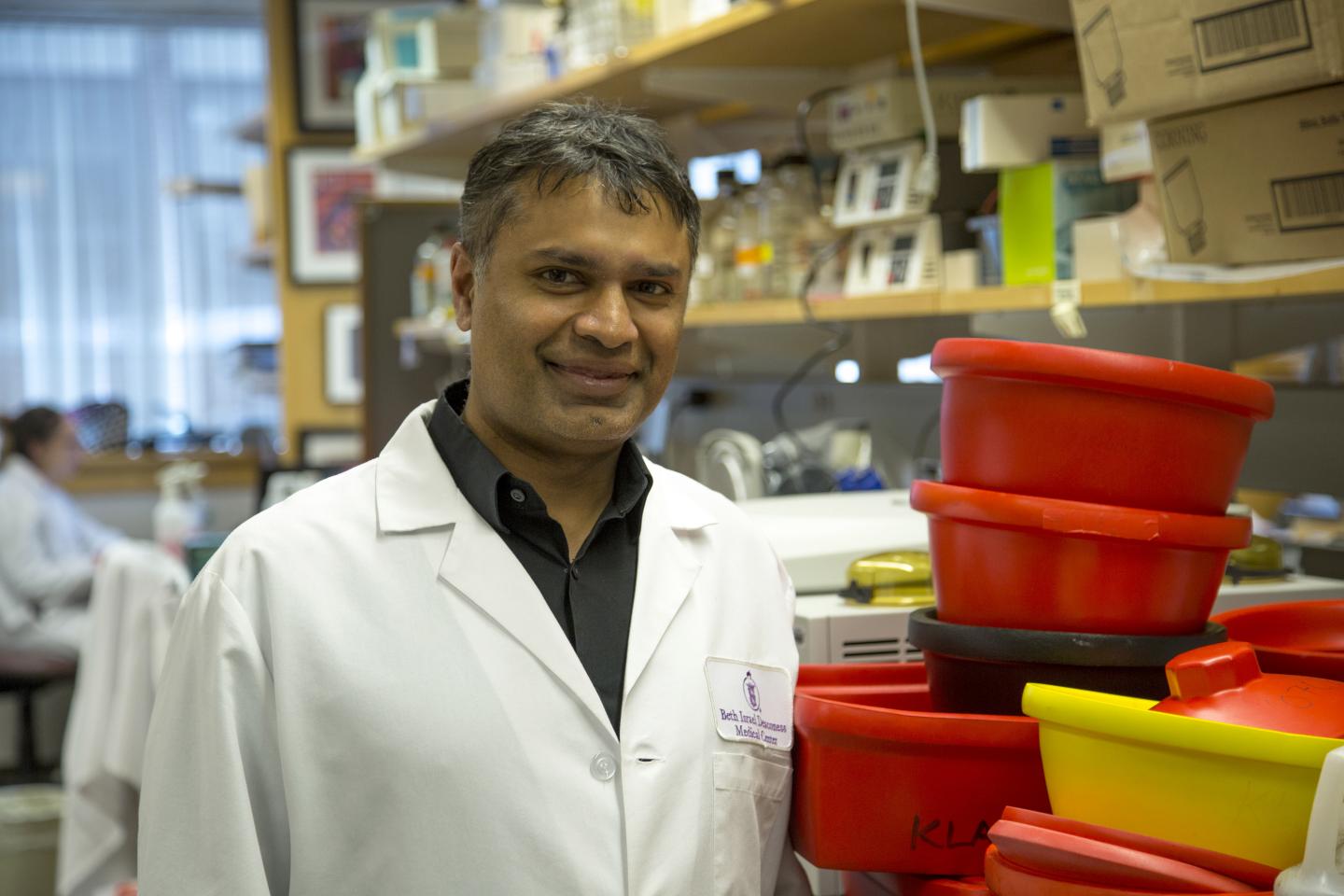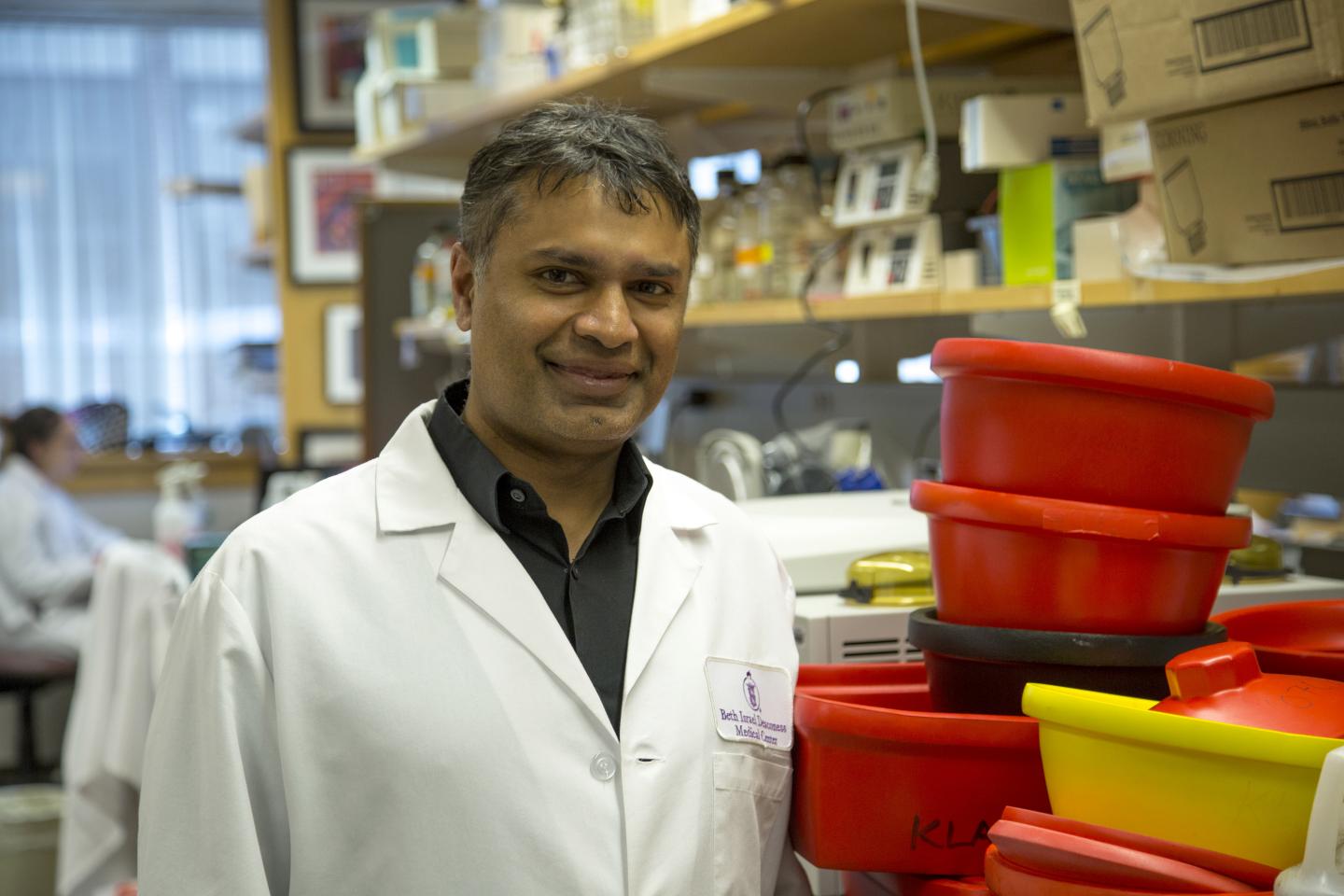
Credit: Beth Israel Deaconess Medical Center
BOSTON – Cancer therapies including radiation and chemotherapy seek to treat the disease by killing tumor cells. Now a team including researchers at Beth Israel Deaconess Medical Center (BIDMC) have shown that the dead and dying cancer cells generated by chemotherapy and targeted cancer therapy paradoxically trigger inflammation that promotes aggressive tumor growth. In a study published today in the Journal of Experimental Medicine, the team has illuminated the mechanism by which tumor cell death can drive primary tumor growth and metastasis. Moreover, the scientists also demonstrated that this unintended consequence of cancer treatment can be halted by resolvins, a family of molecules naturally produced by the human body. The findings represent a novel treatment approach to preventing tumor growth and recurrence.
"In this study we demonstrate that chemotherapy-generated debris from dead and dying tumor cells can stimulate tumor growth, which has pivotal implications for the treatment of cancer patients," said senior author Dipak Panigrahy, MD, assistant professor of pathology in the Department of Pathology. "Conventional cancer therapy designed to kill tumor cells is inherently a double-edged sword."
The findings are consistent with clinical observations on radiation-generated debris dating back to the 1950s, but until now, few studies investigated the molecular mechanisms underlying the phenomenon. In these studies, Panigrahy, a scientist at the Cancer Center at BIDMC, and colleagues – including lead author Megan Sulciner of BIDMC, Charles N. Serhan, Ph.D., of Brigham and Women's Hospital (BWH), Mark W. Kieran, MD, PhD of Dana-Farber Cancer Institute, and Sui Huang, MD, PhD, of Institute of Systems Biology – injected debris from tumor cells killed by chemotherapy into animal models. Thirteen months later, the tumor cell debris alone had produced no visible tumors. However, when the researchers co-injected tumor cell debris together with as few as 100 living cancer cells that would not have resulted in cancer by themselves, the combination promoted rapid tumor growth.
The researchers' further analysis revealed that chemotherapy-killed cancer cells promote growth when a lipid molecule exposed on the surface of dead and dying cells triggers the release of cytokines – proteins that regulate the body's immune and inflammatory response. The resulting "cytokine storm" in the tumor's microenvironment in turn sets the stage to promote new tumor growth.
"This pro-tumor activity could fuel a positive feedback loop that is difficult to overcome with more aggressive cytotoxic therapy like chemotherapy and radiation," said Panigrahy. "This may explain the inherent therapeutic limit to cancer treatments available today."
In another set of experiments, Panigrahy and colleagues attempted to block debris-stimulated tumor growth by introducing a class of anti-inflammatories produced by the human body called resolvins. Discovered by Serhan and colleagues at BWH in 2002, resolvins actively turn off inflammation and stimulate a class of immune cells to digest the tumor debris left in the wake of the cytokine storm. In this study, resolvins suppressed lung and melanoma metastasis in mouse models, the scientists found, and blocked cancer growth in various tumor models including lung, pancreatic, lymphoma, breast, prostate, and melanoma. When the researchers administered chemotherapy and resolvins to a debris-stimulated pancreatic cancer model in mice, the combination resulted in tumor regression.
The findings open the door to a new approach to prevent cancer recurrence as well as treatment by adding resolvins to existing chemotherapy of targeted therapy regimens. Already in clinical development as a potential treatment for other inflammatory disease including eczema, periodontal disease and various neurodegenerative disease, resolvins have proven to be non-toxic and come with minimal side-effects.
###
In addition to Panigrahy, study authors include co-first authors Megan L. Sulciner and Molly M. Gilligan, both of BIDMC, and co-corresponding author Charles N. Serhan of Brigham and Women's Hospital; Dayna K. Mudge, Jaimie Chang, Allison Gartung, Kristen A. Lehner, Emily R. Greene, Yael Gus-Brautbar, Julia Piwowarski and Vikas Sukhatme of BIDMC; Diane R. Bielenberg, Birgitta Schmidt, Tadanori Mammoto and David Zurakowski of Boston Children's Hospital; Mauro Perretti of the William Harvey Research Institute and the London School of Medicine, Queen Mary University of London; Arja Kaipainen of the Fred Hutchinson Cancer Research Institute; co-corresponding Mark W. Kieran of Dana-Farber Institute; and co-corresponding author Sui Huang of the Institute of Systems Biology.
This work was supported by grants from the National Cancer Institute (RO1 01CA170549-02, ROCA148633-01A4, GM095467); Stop and Shop Pediatric Brain Tumor Fund; CJ Buckley Pediatric Brain Tumor Fund; Alex Lemonade Stand; Molly's Magic Wand for Pediatric Brain Tumors; Markoff Foundation Art-In-Giving Foundation; Kamen Foundation; Jared Branfman Sunflowers for Life; The Wellcome Trust (program 086867/Z/08). The resolvin E1 receptor (ChemR23) KO mice were kindly provided by Dr. Brian Zabel (supported by NIH R01AI079320) and Prof. Eugene Butcher (supported by CA169354).
About Beth Israel Deaconess Medical Center
Beth Israel Deaconess Medical Center is a patient care, teaching and research affiliate of Harvard Medical School and consistently ranks as a national leader among independent hospitals in National Institutes of Health funding.
BIDMC is in the community with Beth Israel Deaconess Hospital-Milton, Beth Israel Deaconess Hospital-Needham, Beth Israel Deaconess Hospital-Plymouth, Anna Jaques Hospital, Cambridge Health Alliance, Lawrence General Hospital, MetroWest Medical Center, Signature Healthcare, Beth Israel Deaconess HealthCare, Community Care Alliance and Atrius Health. BIDMC is also clinically affiliated with the Joslin Diabetes Center and Hebrew Rehabilitation Center and is a research partner of Dana-Farber/Harvard Cancer Center and the Jackson Laboratory. BIDMC is the official hospital of the Boston Red Sox. For more information, visit http://www.bidmc.org.
Media Contact
Jacqueline Mitchell
[email protected]
617-667-7306
@BIDMCNews
http://www.bidmc.harvard.edu





